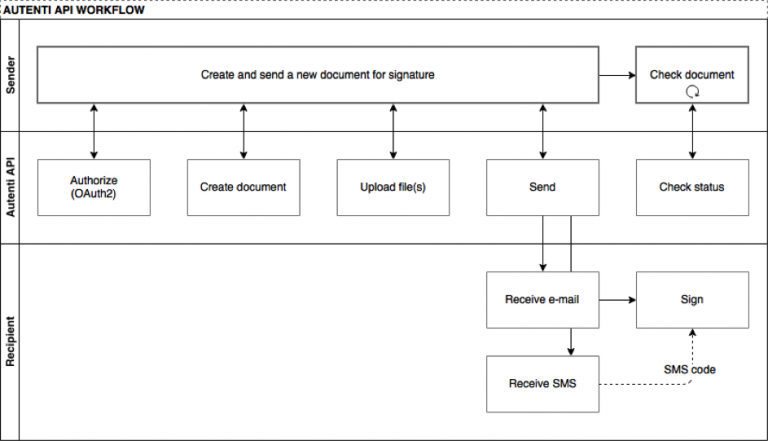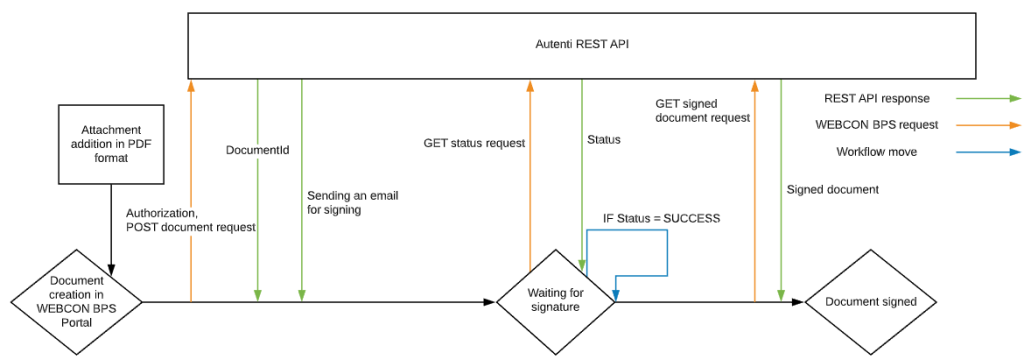The WEBCON BPS platform as a DMS class tool supports the possibility of making an electronic signature.
It is implemented with the help of external suppliers such as:
- AdobeSign
- Autenti
- DocuSign
- Skribble
In order to use the possibilities of signing documents in WEBCON BPS, it will be necessary to use a programming add-on extending the operation of the platform.
The entire operation of the user’s front (based on the Autenti signature as an example) is relatively simple. By completing the list of recipients on the form (e.g. on a specially designed list of items), we designate people who will complete the signature on the document in a specific order. Controlling the signature order is one of the advantages of the programming add-on that implements the electronic signature functionality in Webcon BPS. Each person must have an e-mail address and telephone number completed (if he or she signs the document with an ordinary signature with additional (optional) SMS verification).
The diagram of the signature process on the manufacturer’s website is as follows:

We can also add additional permanent information to the signature, such as the company’s contact details – if the signature is made, for example, by a person acting as the company’s president. Of course, the example with the president is only symbolic. Address data can be attached to any person that has been defined on the list of people to sign. It’s just a matter of configuring the data on the form and of course – the SDK add-on.
If the user has a certificate that allows signing documents with a qualified signature (an officially recognized signature – such as a handwritten one at an office), the login data will be provided only at the time of signing on the Autenti platform.
The whole solution from the user level is simple. The designated attachments are sent to the Autenti platform using the Webcon BPS SDK. The document is sent to designated addressees, who are configured by the list on the form on the Webcon BPS platform. E-mail messages are automatically sent to the first recipient with a request to sign the document (the type of signature can also be specified on the form using its configuration). After the first person signs it, the other person gets an email asking for a signature. Messages are sent to the designated e-mail addresses. After the signature procedure is completed, all recipients can download the signed document.
An additional extension also allows you to automatically download signed documents to the Webcon BPS platform for a specific form (because, during shipping, the documents map to specific identifiers assigned at the moment, which read elements in the Webcon BPS system). In addition, the SDK add-on for Webcon BPS allows you to check the document status. Such a function is useful when, for example, a document in Webcon is processed by the HR department, and signatures are made by persons from the Management Board. No one is aware of board signature progress. Then the “check signature status” function that returns information about the next e-mail address for signature turns out to be very helpful
The whole activity is also illustrated in the diagram below:

You can read about other possibilities of the WEBCON BPS platform in other articles. We invite you to read:
Digital transformation 4.0 in 4 steps – how to be a Webcon superhero
Business processes in a simpler form – WebCon
What does Webcon have to do with building with blocks?
Cezary Rzucidło – Transition Technologies MS